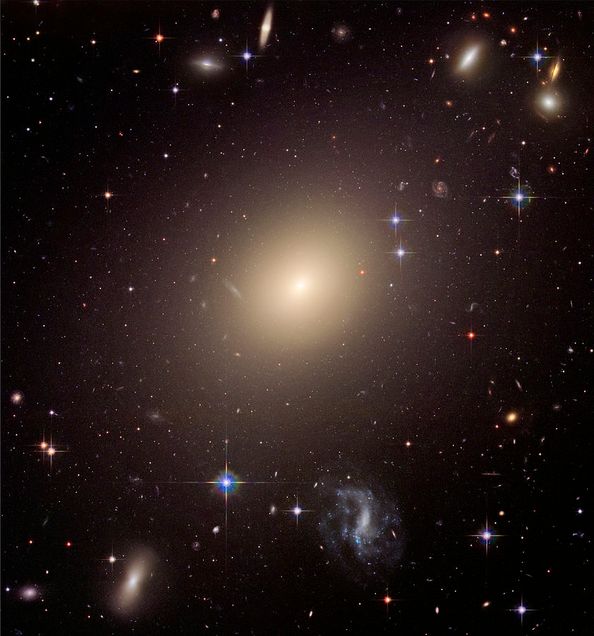Using Out of This World Methods to Gather Space Data
BY ALEX JOHNSON
A cold, dark, vacuum full of giant flaming gas balls is not exactly an ideal place to collect data. However, much of what we know about space is thanks to ingenuitive scientists who figure out how to collect information in an environment where they cannot exist. They create instruments and methods for gathering data in all kinds of ways, both from Earth and spacecraft, despite the many challenges.
Reading Between the Lines: Waves

Some methods for studying space involve collecting data remotely from Earth. Sheng Huang, a space physics doctoral student and Hariri Institute Graduate Student Fellow, describes how transmitters on Earth provide data on space objects. Transmitters release energy waves at certain frequencies in the form of sound or light that travel through the upper atmosphere of the planet. These waves are distorted by different materials and objects that exist in their path as they move through space. Depending on how the wave is distorted, scientists can infer what object is in the wave’s path. The more waves that pass through a space, the clearer it becomes what material is there, allowing scientists to explore far away places from the ground.
A visual picture of these energy waves, known as a spectrum, can be used to determine the makeup of a specific object. Astronomy doctoral student and Hariri Institute Graduate Student Fellow Adam Samuels explains how a spectrum can determine what materials an object is made of, even from light years away. “You point a telescope at say, the sun, and instead of putting the light into a camera you put it through a prism,” Samuels says. “You’ll notice these missing black lines in the spectrum, these correspond to the energies of the electron levels. The element’s specific electron levels act like a fingerprint, and the wave is the ink that allows us to see the unique pattern of different elements.”

Showing Their True Colors: Images
Scientists sometimes use photometry, or telescope and satellite imagery, to capture and analyze pictures of objects in space. “The color of a galaxy can signify certain properties that it has,” Samuels says.
Age, temperature, and the general life expectancy of the stars in a distant galaxy can be determined simply by being able to see their color. Stars that are blue are hotter and younger. Their chemical makeup and temperature also means that they will not exist for a long time, and only live for several million years. Red galaxies however, are much lower in temperature, and live much longer than blue stars. Being able to see physical properties like this can help experts prioritize galaxies that will yield better data for specific projects, or define relationships between galaxies.
Lightyears to Go: Challenges

Objects that exist in space close to Earth can be studied using measurements from a spacecraft. These measurements are precise, but they are more expensive and cover a smaller area than a ground wave measurement. This method is more demanding on the instruments because the spacecraft is moving and various interferences can harm the integrity of the data and equipment, like high solar activity, or extreme space weather, states Sheng.
There are many other challenges that come with data collection in space, and scientists battle with the issue of data integrity. “The most difficult thing in astronomy is determining the distance to an object,” Samuels states, “The speed at which it is receding from us can be used as a proxy, but that’s all that it is–a proxy.” This makes it difficult to discern how far away a galaxy actually is, and how close it is to other galaxies in space. Another challenge comes with interpreting models that scientists create from data. Researchers don’t yet understand all the physics of space, so models might not be specific or accurate.
Scientists have discovered numerous ways to find and measure information in the vastness of space, but not without challenges. As the tools and technology for studying this environment become more accessible, so do new discoveries and solutions.
Interested in learning more about the research happening at the Hariri Institute? Sign up for our newsletter here.
